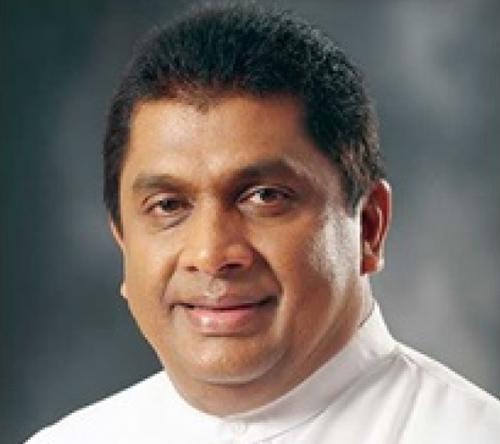
For the first time in the annals of Sri Lanka’s parliamentary history a comprehensive report of the Committee on Public Accounts (COPA) was presented having examined the performance of 831 state institutions during the financial year 2015. COPA has catagorized institutions with a special marking scheme and rewarded the institutions which have the highest performance in the financial year 2015. COPA Chairman and Finance and Mass Media Deputy Minister Lasantha Alagiyawanna in an interview with the Sunday Observer said, under the guidance of COPA an extensive program has been planned to strengthen the present audit reporting system of state institutions based on computer network.
Deputy Minister Alagiyawanna said this is the first time that a comprehensive report of COPA was presented, including all the institutions examined by it. He said, the way of conformity to the provisions imposed currently and questionnaires regarding matters such as, planning, financial control, provision regarding internal administration, security for state owned properties, submitting accounts, maintaining books and documents, internal and external auditing process and preparing performance reports were looked at.
We hope to issue new circulars next year to improve the performance of COPA, and take steps to develop the questionnaire sent to state institutions. We have taken measures to reward institutions which succeeded in achieving a high performance level from the results of the evaluation of 2015, while institutions which recorded low performance, obtaining marks below 30 and 50 will be summoned before COPA to introduce a program to improve their performance. Once this process is duly implemented, many shortcomings in COPA can be sorted out.
Significant progress
He said, COPA, by rewarding 81 state institutions which showed highest performance in 2015 intends to give a stimulant to the rest of the state institutions. An award ceremony was held at the Parliamentary complex on November 13 under the patronage of President Maithripala Sirisena and Prime Minister Ranil Wickremesinghe to recognize institutions which had shown a high level of performance during 2015. COPA has made this significant progress due to the dedication of its members.
COPA can examine the performance of the institutions and present its report to Parliament. Parliament would then refer the report to the Finance Ministry and other relevant Ministries. Thereafter, it is up to the relevant Ministries to take necessary action and present it to Parliament. The compliance with financial and performance guidelines of all institutions examined by COPA is around 67 percent.
However, this doesn’t mean that nearly one third of state institutions have not followed the financial regulations.
Of the institutions examined, nearly two thirds have adhered to these guidelines. The 831 institutions examined by COPA includes- Government Special Spending Units (18), Government Ministries (50), Government Departments (91), District Secretariats (25), Provincial Council Funds (9), Provincial Council Ministries (45), Provincial Council Special Spending Units and Departments (213), Provincial Council Statutory Authorities (45), Municipal Councils (23), Urban Councils (41) and Pradeshiya Sabhas (271).
Assessment program
A total of 31 COPA reports have since been presented to Parliament. However, these 31 reports had examined only 410 state institutions. Even after the present COPA was appointed, there were shortcomings on some state institutions which were summoned before COPA earlier, as the Committee had only looked into the reports presented seven or eight years ago. However, no fruitful solution has been given to the shortcomings highlighted in those reports. We hope to present the 2016 COPA report to Parliament early next year.
The Deputy Minister said, the methodology they followed to expedite the findings of COPA was that an island-wide assessment program based on computer networks covering all institutions subjected to the supervision of the Committee was implemented for the first time in the history of the Committee.
A questionnaire was sent to state institutions via computer networks to ascertain whether they have complied with circulars. The questionnaire consisted of 57 matters queried through 25 main matters. The prime objective is to perform the duties of the Committee with the data and information referred to by the institutions, for the attention of the Committee after examination by the Auditor General.
Accordingly, the assessment program was concluded successfully covering special expenditure units, Ministries, Departments, District Secretariats, all Provincial Council and Local Government institutions, including all expenditure units based on the accounting year 2015.
Alagiyawanna said, earlier 10 to 15 state institutions had been summoned before COPA per year. For example, of the 831 institutions, if 10 to 15 institutions are summoned before COPA, we can’t say that Parliament has fulfilled its responsibility.
Therefore, we introduced this information network system to cover almost all 831 institutions during the financial year 2015.
For the first time, we obtained information from state institutions through a web-based computer program without summoning them before COPA and discussed them in detail.
This is the first time a comprehensive report of COPA was presented including all the institutions examined by it. We hope to issue new circulars to improve the performance of COPA and further develop the questionnaire sent to state institutions with effect from next year. COPA Chairman Alagiyawanna said COPA can only make recommendations and it is up to the Government to take action against institutions which have not complied with relevant financial regulations.
After COPA presents its report, the Government, Finance Ministry and other relevant institutions should report to Parliament on appropriate measures to be taken. But this has not happened over the past few decades. In future, we hope to fulfil the maximum possible which can be done by COPA. Once this process is properly implemented, existing shortcomings of COPA could be sorted out.
